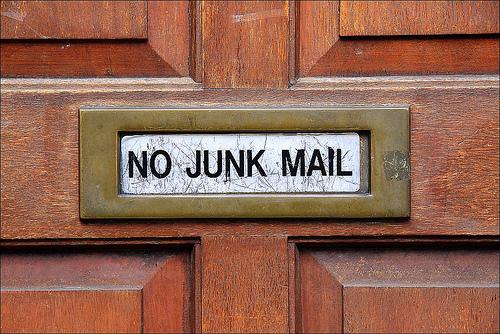 I’m going to do my best not to make this post into a rant but I have to admit that it was inspired by some especially bad email communications that I’ve received.
I’m going to do my best not to make this post into a rant but I have to admit that it was inspired by some especially bad email communications that I’ve received.
Email is a peculiar form of communication. We get so much of it that it’s easy to treat it all as junk to be gotten rid of. Of course, the email that we send to others is valuable and should be read and acted upon. Here are seven suggestions for effective email communication, whether you are the sender or the recipient. [Note that these suggestions are for business correspondence. Feel free to ignore them for email to your friends and family, who will love you no matter what.]
1. Use a credible email address.
Like it or not, some people will make judgments about your credibility based on your email address, particularly when you are corresponding as a business. Consider these examples from Modern Nerd:
mrbigshot@freemail.com
What’s that, my good man? You’re a marketing director with a passion for helping iPhone developers breach new and exciting markets, build strong corporate images, and explore and project consistent brand values? And you’ve got a Hotmail address?johnsmith1988@i-am-not-a-number.com
Look, John, I know that picking usernames has been a lifelong drag, but don’t just tag a number on the end. Especially not your birth year. You’re better than that.anyone@aol.com
I’ve spent 10 years trying to ditch my asinine prejudice against AOL users, but I still struggle to take aol.com addresses seriously. If you’re an AOL user and you feel hurt by this, I can only apologise and say that I’m trying to grow out of it.cuddlebunny@pass-me-a-bucket.com
I have a glowing red button on my desk for cutesy addresses like these. Nothing dramatic. It just deletes them.
2. Write short emails
Like most things online, people don’t read emails closely, they skim them. I know that when I open up a long email (anything that I have to scroll through), I immediately ask myself, “can I put this aside and read it later?” I place a high value on concise and direct writing and am much more likely to respond to emails that use it.
If you can’t shorten the text of your email, break it into multiple paragraphs. Large blocks of text are hard to read on a computer monitor and it’s easy to lose the thread of the conversation. Remember your high school english: each new thought or idea should start a new paragraph.
3. Limit your email to a single subject
Closely related to #2, give your recipient a chance to digest and respond to the subject of your message before moving along to a new one. Since many people also use their inbox as a todo list, separating your subjects helps them to organize their work flow and anything we can do to help them with that makes good communication more likely.
4. Make clear requests
Almost all business emails contain something that we’d like the recipient to do. It might be answering a question, taking a specific action or forwarding information to someone else. If the request is buried in the middle of the text or, even worse, thrown in as an aside (“if you get a chance, you might send this on to Bill”), it’s much less likely to be acted on. A good technique is to summarize at the end of the email, using a numbered or bulleted list, the actions you would like the recipient to take. If you want them to let you know when they have taken those actions, list that too.
5. Honor requests from others
Here, I have to rant a little. When you ignore a direct request in an email, it affects your trustworthiness and reputation. At least for me it does. Ignoring a request says to me that either a) you didn’t hear me or b) that you didn’t value my request enough to respond to it. Either way, it’s a huge roadblock to effective communication.
I know everyone’s busy and has lots of requests that they have to attend to and I’m not suggesting that every request must be handled immediately. I am suggesting that every one has to be acknowledged, if only to say “I’ll get back to you on that” (provided that you do).
6. Acknowledge receipt of emails
Sometimes spam filters get a little carried away and emails fall into a big black hole in the ether. In almost all cases, the only way for the sender to know that an email has been received is by getting an email back from the recipient. Let your sender know that you’ve gotten their email (maybe even thank them for it), even if you aren’t able to respond to it right away. People expect a business to respond within 24 hours and will start to feel ignored beyond that.
7. Don’t write for yourself, write for your reader
This is another way of saying, consider your audience. Make sure that you include the things they need to know to make sense of your correspondence.
- Make use of text links to provide them with background information (these also help keep your email short).
- Stay away from jargon, unless you’re writing to someone who knows the jargon, in which case it can be a useful shorthand.
- Use inline or attached images sparingly and only where they can help illustrate your points.
- Use emoticons (sparingly) if you’re worried that your tone might be misinterpreted.
- Put yourself in the reader’s place as ask yourself, “what would I need to know in order to understand this?”
Finally, be nice and remember that everything you send over the Internet might someday be made public.
Photo by Rupert Ganzer.